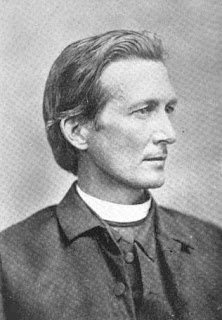After completing his novitiate in Missouri, Rice studied theology in Paris and was ordained in 1860. Two years later, he joined the faculty of Our Lady of Angels Seminary and College, which the community opened in 1856. When the first Vincentians came to America in 1815, they had intended to focus on seminary work, but the needs of the times led them to establish colleges for lay students. Today the seminary is closed, and the college is known as Niagara University.
In 1863, Father Rice was appointed acting president. Described as “a man of great talent and natural leadership,” he threw himself fully into the work. In December 1864, both the college and seminary burned down, and it looked like the end of Our Lady of Angels. Vincentian leadership did not want to reopen it because of the financial burdens involved, but Rice insisted on it. It was “through his tenacity and zeal that it was rebuilt.” In 1865 he was formally named president.
Rice did more than just rebuild the school. A historian of the university writes that under his leadership “a dilapidated wayside inn was transformed into a seat of learning.” He is known as Niagara University’s second founder. Among the students who attended Niagara during his tenure was Venerable Michael J. McGivney, future founder of the Knights of Columbus.
Quite literally, Rice worked himself to death. His health was never strong to begin with, and in 1877 he took a leave of absence. He died while in Ireland. He was buried in the seminary graveyard, at his request, “near the apple tree.” When the students at Niagara heard of his death, they drafted a resolution praising “a life of unceasing toil in the cause of education and religion.”












